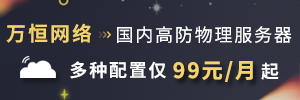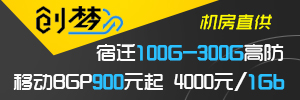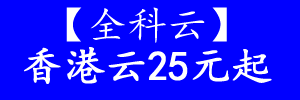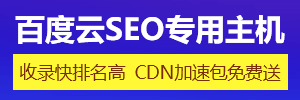vue业务实例之组件递归及其应用
脚本之家 / 编程助手:解决程序员“几乎”所有问题!
脚本之家官方知识库 → 点击立即使用
递归简介
含义:程序调用自身的编程技巧称为递归,那组件调用自身就是组件递归
应用场景:在实际业务开发中,通常应用于菜单栏、树组件、多级下拉框等
vue实现组件递归
调用效果及代码

1 2 3 4 5 6 7 8 9 10 11 12 13 14 15 16 17 18 19 20 21 22 23 24 25 26 27 28 29 30 31 32 33 34 35 36 37 38 39 40 41 42 43 44 45 46 47 48 49 50 51 52 53 54 55 56 57 58 59 60 61 62 63 64 65 | <!-- * @Date: 2020-12-09 17:52:54 * @Author: surewinT 840325271@qq.com * @LastEditTime: 2022-05-10 14:14:15 * @LastEditors: surewinT 840325271@qq.com * @Description: 调用页面--><template> <div class=""> <div v-for="(item, index) in testList" :key="index"> <Test :listitem="item" /> </div> </div></template><script>import Test from "./test.vue";export default { components: { Test, }, props: [], data() { return { testList: [ { name: "你好啊", value: "1", children: [ { name: "你好啊", value: "1-1", }, { name: "你好啊", value: "1-2", children: [ { name: "你好啊", value: "1-2-1", }, ], }, ], }, { name: "好的呢", value: "2", children: [], }, ], }; }, mounted() {}, watch: {}, methods: {},};</script><style lang='scss' scoped>.p-el-menu { width: 200px;}</style> |
组件递归案例
需要递归的组件,必须写组件名name,可以在代码中直接使用name进行调用
1 2 3 4 5 6 7 8 9 10 11 12 13 14 15 16 17 18 19 20 21 22 23 24 25 26 27 28 29 30 31 32 33 34 35 36 37 38 39 40 41 | <!-- * @Date: 2022-05-10 11:30:50 * @Author: surewinT 840325271@qq.com * @LastEditTime: 2022-05-10 14:15:09 * @LastEditors: surewinT 840325271@qq.com * @Description: 组件递归案例--><template> <div class="test-root"> {{ `${listitem.value}:${listitem.name}` }} <div v-for="(item, index) in listitem.children" :key="index"> <!-- 直接使用自身组件 --> <Test :listitem="item" /> </div> </div></template><script>export default { // 必须写name name: "Test", components: {}, props: ["listitem"], data() { return {}; }, mounted() {}, watch: {}, methods: {},};</script><style lang='scss' scoped>.test-root { padding: 20px; display: inline-block; border: 1px solid #409eff; margin: 10px 0;}</style> |
递归实现菜单栏
调用效果及代码

1 2 3 4 5 6 7 8 9 10 11 12 13 14 15 16 17 18 19 20 21 22 23 24 25 26 27 28 29 30 31 32 33 34 35 36 37 38 39 40 41 42 43 44 45 46 47 48 49 50 51 52 53 54 55 56 57 58 59 60 61 62 63 64 65 66 67 68 69 70 71 72 73 74 75 | <!-- * @Date: 2020-12-09 17:52:54 * @Author: surewinT 840325271@qq.com * @LastEditTime: 2022-05-10 14:20:32 * @LastEditors: surewinT 840325271@qq.com * @Description: 调用页面--><template> <div class=""> <el-menu class="p-el-menu"> <Menutree :menuList="menuList" /> </el-menu> </div></template><script>import Menutree from "./p-el-menu.vue";export default { components: { Menutree, }, props: [], data() { return { menuList: [ { label: "菜单1", value: "1", children: [ { label: "菜单1-1", value: "1-1", }, { label: "菜单1-2", value: "1-2", children: [ { label: "菜单1-2-1", value: "1-2-1", }, ], }, ], }, { label: "菜单2", value: "2", childern: [], }, { label: "菜单3", value: "3", children: [ { label: "菜单3-1", value: "3-1", }, ], }, ], }; }, mounted() {}, watch: {}, methods: {},};</script><style lang='scss' scoped>.p-el-menu { width: 200px;}</style> |
递归生成菜单
1 2 3 4 5 6 7 8 9 10 11 12 13 14 15 16 17 18 19 20 21 22 23 24 25 26 27 28 29 30 31 32 33 34 35 36 37 38 39 40 41 42 43 44 | <!-- * @Date: 2022-05-10 11:45:08 * @Author: surewinT 840325271@qq.com * @LastEditTime: 2022-05-10 14:28:58 * @LastEditors: surewinT 840325271@qq.com * @Description: 递归生成菜单--><template> <div class=""> <div v-for="(menu, index) in menuList" :key="index"> <el-menu-item v-if="!menu.children || menu.children.length == 0" :index="menu.value"> <i :class="menu.icon ? menu.icon : 'el-icon-menu'"></i> <span slot="title" class="group_title">{{ menu.label }}</span> </el-menu-item> <el-submenu v-else :index="menu.value"> <template slot="title"> <i :class="menu.icon ? menu.icon : 'el-icon-menu'"></i> <span>{{ menu.label }}</span> </template> <!-- 递归自身 --> <p-el-menu :menuList="menu.children" /> </el-submenu> </div> </div></template><script>export default { // 必须写name name: "p-el-menu", components: {}, props: ["menuList"], data() { return {}; }, mounted() {}, watch: {}, methods: {},};</script><style lang='scss' scoped></style> |
仓库源码
总结
到此这篇关于vue业务实例之组件递归及其应用的文章就介绍到这了,更多相关vue组件递归及应用内容请搜索脚本之家以前的文章或继续浏览下面的相关文章希望大家以后多多支持脚本之家!

微信公众号搜索 “ 脚本之家 ” ,选择关注
程序猿的那些事、送书等活动等着你
本文来自互联网用户投稿,该文观点仅代表作者本人,不代表本站立场。本站仅提供信息存储空间服务,不拥有所有权,不承担相关法律责任。
如若内容造成侵权/违法违规/事实不符,请将相关资料发送至 reterry123@163.com 进行投诉反馈,一经查实,立即处理!
相关文章

优雅的elementUI table单元格可编辑实现方法详解
这篇文章主要介绍了优雅的elementUI table单元格可编辑实现方法详解,小编觉得挺不错的,现在分享给大家,也给大家做个参考。一起跟随小编过来看看吧2018-12-12




































最新评论